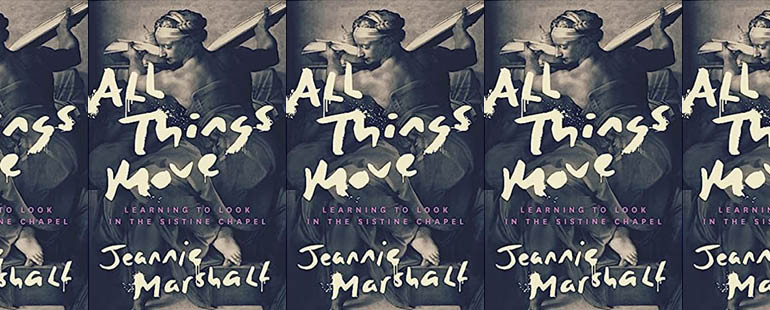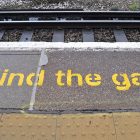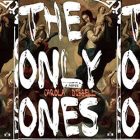Searching for Answers in the Enormous

Jeannie Marshall’s All Things Move: Learning to Look in the Sistine Chapel brings Michelangelo’s frescoes into exacting view, considering not only the details of the images and context of their making, but their ongoing situatedness in human history. In the process, with an eye to both the seer and the seen, Marshall observes the very act of observation and the ways in which attending to one thing makes possible comprehending another. When Marshall first offers up the oft-cited Simone Weil quotation—“Attention, taken to its highest degree, is the same thing as prayer”—she is referring to the careful scrutiny of the art and a certain approach to reading the images she sees, but as the book carries on, it is attention that forms the basis of something compassionate and holy as she reflects on her own immediate past and an understanding of her mother’s life.
In order to consider the process of really seeing, the book first considers obstacles to it. To see the frescoes in the Sistine Chapel is a fight against crowding and the regimented chaos of tourism: herds of visitors shuffle through as security mandates the flow of bodies and eyes through the space. Marshall’s first visit to the Sistine Chapel takes place in 2014, not long after her mother’s death, and she finds it a singularly unsatisfying experience amid the shushing attendants and incurious gaggle, the overwhelming sheer quantity of images to decipher: “I knew I would have to understand the peripheral stories, too, if I was going to understand the centre. It all seemed too much, too enormous, and too religious.” At once, the language is suffused with obligation—I would have to—and alienation—too religious. More difficulties mount in consideration of how commodified the Sistine Chapel’s most iconic images have been made; how can a viewer be struck with awe before an image that’s been made into mugs, mouse pads, magnets, and memes?
So she begins from the margins. She doggedly returns and returns again in the emptier, stranger spaces of the summer of 2020, and focuses her attention on those peripheral stories, the doomed people outside the Ark and the sibyls and the prophets, even while being unsure of why she is doing this in the first place. The weight and space of the pandemic magnify everything. She writes, “At that extreme moment of isolation, I felt like the ant who has suddenly grasped the colony; I felt a part of something much bigger than what I can see, yet also alone. By staring and staring at this ceiling, I was struggling toward an answer to a question I hadn’t properly asked.” That question is existential—how do I exist, and why?—and elemental in its anxiety. It is also a question that evolves as the book goes on: what does it mean to live, and how should it be done? The historic anchors of that question—the primacy of the church and then its violent divisions—shade the images and the answers as she looks.
A confrontation is taking place in this contemplation, and every moment of Marshall’s experience defies reduction to platitude: “What I experienced wasn’t therapeutic, gentle, or restorative. I was elated, and my thoughts were bouncing wildly. I felt that stiffening in my hands again, as though they were tightening their grip on something, and my palms were sweating.” Something urgent drives the process forward, and for a time, Marshall focuses that urgency through the context of art history, rather than personal connection. She defines and explores the sublime and extremities of reaction to it, ranging from panic and terror to the urge to attack the works of art themselves. She brings Stendhal syndrome into view: a desperate wish to forget the rousing feelings, the catastrophic overwhelm in the presence of powerful art. She notes the mystery of that movement forward, and though she does not share the particular faith expressed in Michelangelo’s frescoes, she feels affected, profoundly: “Seeing it amounts to struggling with all the unknowns in our world, beginning with our existence and ending with whatever happens once we no longer exist.” She tells the story of the Wars of Religion, the sacking of Rome by Protestant forces, and the violence done within the city and without, the marks carved into the frescoes themselves by the Protestant soldiers, which stand as testimony to the force of reaction.
The internal force of reaction is revealed more slowly, but the two things are inextricably tied. She writes, “The graffiti is all that physically remains of their rage…scratches are a reminder of a kind of rage that was around me as I was growing up.” And here, only after fully half of the book has unfolded, does the process of looking turn ineluctably inward. Here—now fully beside and within the frescoes and their history—does the narrator turn the intensity of her attention to the circumstances that prompted her to her first unsatisfactory visit to the Sistine Chapel. In exploring the fraught history of her own family—her father’s first wife, whom her father would not divorce; her mother, unwed to the father of her children, struggling to raise her family alone under the weight of religious stigma and poverty—the capaciousness and grace of that attention can navigate the anger of the past, see into bitterness and disappointment without letting those things hold sway. Because the process of learning to look has already been undertaken in the art, it is possible, it seems, for the narrator to look without the specter of Stendhal’s words and reactions looming into her own life.
Marshall’s narrative doesn’t arrive at tidy religious revelation or optimistic conversion; what takes center stage is simply the willingness to examine her own story from the edges and move inward: from the threads of her mother’s complicated faith and with attention to the moments in her life that allowed her to stand here, in this artistic and historical center. By not only observing but also by researching and knowing the context of the Sistine Chapel and the humanistic forces that made its existence possible, she finds figures like Giles of Viterbo, who “treated his religion as though it were an artwork rather than a set of instructions.” This discovery softens, in a way, the rigid and damaging experience of her mother’s faith through the bulk of her adult life and prefigures her mother’s act of reconciliation with the church much later in life. And akin to what reassurance her mother and others may find in faith, Marshall finds in that act of learning, connecting her own experiences in college “learning something for the intellectual pleasure of it” movingly with the humanistic endeavors of Michelangelo and Giles of Viterbo, and acknowledging the power therein: “But what they are doing, these thinkers and artists, is taking the inchoate, the unsayable, and they are trying to say it, whether through philosophy, math, astronomy, or painting; they are trying to touch that central core of us and our universe and to make us feel it, like God touching Adam. And it is possible to feel yourself deeply inserted into the long march of humanity and to see it carrying on. It’s a humbling and grand feeling all at once.” All Things Move, likewise, seeks to say the unsayable, to find meaning in something enormous and distant and old, showing the reader the mechanism Marshall uses in doing so for herself in a way that is inherently translatable. This interweaving of experience—a way to feel connected to something larger even in the most isolating moments life has to offer—mitigates the enormous space tragedy carves into lives, making it at least more possible to understand what happens to one, now, because it is possible to see, if one is willing to look, what has happened before.



